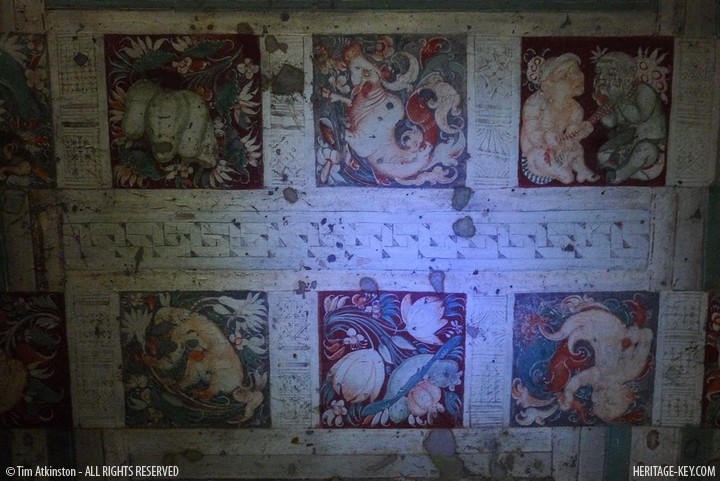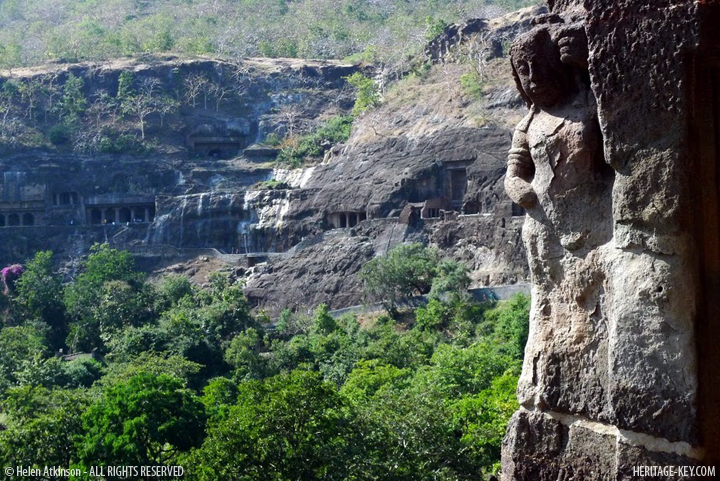 My recent travels in India took me to Ajanta, about two hours’ drive outside of Aurangabad, in the Indian state of Maharashtra (where they’re making perfectly drinkable wine these days, by the way).
My recent travels in India took me to Ajanta, about two hours’ drive outside of Aurangabad, in the Indian state of Maharashtra (where they’re making perfectly drinkable wine these days, by the way).
The nearby small town of Ajanta gives its name to the collective of 29 caves carved out of a sheer wall of rock in a horseshoe-shaped river canyon, completed in the period 200BC to 500AD in the name of Buddhism. Several are temples, but most are dormitories originally built for temporarily housing Buddhist monks, as well as travellers and itinerant spice traders. The spice route passed through here on the way from Southern India, where they still grow wonderful black pepper, on its way to the main port at what is now Mumbai, where spices were loaded for shipment on to Arabia and Europe. Ihad read about the caves in guide books, and had to wrangle a little with my husband to make the time to see them during our woefully short visit to India, but despite a complex and long journey, they were thoroughly worth it.
Obviously, the caves are an astonishing achievement, not just artistically, but from an engineering point of view. They were cut in and down, and there wasn’t much room for error. The breadth of some unsupported ceilings is impressive, as is the finely symmetrical architectural work.
 The paintings depicting scenes from the life of the Buddha are still, thankfully, plentiful, and their artistry is breathtaking. There’s an awful lot to see here. We weren’t able to cover it in a single visit. Sanjay, our guide, responded to our rapturous wonder with enthusiasm, but also pointed out that the caves hadn’t been terribly well looked after in the past. The caves were, indeed, completely lost to common knowledge for 2,000 years before they were rediscovered in 1819 by some English chap called John Smith on a tiger hunt. (You couldn’t make this stuff up. Okay, actually, you could. That’s the thing about India. It’s made of the stuff of tall tales.) Then the British decided to try to preserve some of the murals by slathering them with varnish. Sadly, they hadn’t figured out that the paintings had survived this long by being able to breath with the damp rock, and sealing them off like that, instead of preserving them, caused them to fade to a grainy black and white. Luckily, however, there were so many of them, in such good condition, that the British weren’t able to good-naturedly ruin them all. And, hey, it’s not like the Indians are doing such a great job of keeping the caves safe from the eager little hands of visiting school groups. But, then, how would any country, even one far wealthier than India, play conscientious caretaker to the vast number of ancient treasures there are in this mad, eclectic, exuberant nation? As Sanjay said, “In India, we are very good at making history, but not so good at keeping it.”
The paintings depicting scenes from the life of the Buddha are still, thankfully, plentiful, and their artistry is breathtaking. There’s an awful lot to see here. We weren’t able to cover it in a single visit. Sanjay, our guide, responded to our rapturous wonder with enthusiasm, but also pointed out that the caves hadn’t been terribly well looked after in the past. The caves were, indeed, completely lost to common knowledge for 2,000 years before they were rediscovered in 1819 by some English chap called John Smith on a tiger hunt. (You couldn’t make this stuff up. Okay, actually, you could. That’s the thing about India. It’s made of the stuff of tall tales.) Then the British decided to try to preserve some of the murals by slathering them with varnish. Sadly, they hadn’t figured out that the paintings had survived this long by being able to breath with the damp rock, and sealing them off like that, instead of preserving them, caused them to fade to a grainy black and white. Luckily, however, there were so many of them, in such good condition, that the British weren’t able to good-naturedly ruin them all. And, hey, it’s not like the Indians are doing such a great job of keeping the caves safe from the eager little hands of visiting school groups. But, then, how would any country, even one far wealthier than India, play conscientious caretaker to the vast number of ancient treasures there are in this mad, eclectic, exuberant nation? As Sanjay said, “In India, we are very good at making history, but not so good at keeping it.”





